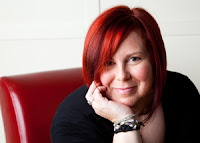This is a post about fiction. I swear. It just looks like a post about the movie Brave.
I have three kids, aged 6 & under. They’re a great excuse to go to animated movies, and last month we went to see Brave.
 I enjoyed Brave, but it’s very different from Pixar’s other movies. Wikipedia says that some people have likened it to a Grimm or Andersen fairy tale, and that seems very accurate. Brave hasn’t been quite as universally loved as previous Pixar classics, and the darkness inherent in “real” fairytales might be part of it.
I enjoyed Brave, but it’s very different from Pixar’s other movies. Wikipedia says that some people have likened it to a Grimm or Andersen fairy tale, and that seems very accurate. Brave hasn’t been quite as universally loved as previous Pixar classics, and the darkness inherent in “real” fairytales might be part of it.
But I have to say, when I see people criticizing the form of the film, I’m very confused. I’ve seen a few people call the movie “unfocused” or even “plotless.”
It’s neither.
To me, focus in film or fiction is defined very simply: do most of the scenes support the central theme and plot? Brave‘s central theme and plot is a mother-daughter relationship: how Queen Elinor wants Merida to behave (like a lady) and how Merida wants to be free.
I think part of the problem starts right there. Viewers have seen variations on the princess who wants to (to quote her father King Fergus’s assessment [behind her back]) “let my hair flow in the wind as I ride through the glen firing arrows into the sunset” before. Several times:
- Ariel
- Jasmine
- Pocahontas
- Belle
- Rapunzel
- Seeing a trend?
It seems like the only kind of princess Disney knows how to write. So let’s look at the trope established by these movies, using another rebellious red-headed princess who wants to be free to follow her heart but her oppressive parent tries to force her to do her duty: Ariel from The Little Mermaid.
In The Little Mermaid, Ariel rebels. She goes to a witch and gets a spell to get what she wants. So far, so good: Brave‘s Merida follows the same path right down to her hair color.
Yeah, Ariel’s rebellion causes problems, but in the end, she wins. She was right and her dad is punished by being separated from her forever (though they still love and forgive one another, at least nonverbally). The trope is repeated in several movies: princess rebels, gets what she wants, was right all along, shows evil parent how wrong they were. (Exactly the message we need to send to our children!)
Dollars to donuts, that’s the movie people were expecting when they walked in, or at least as we approached the end of Act I. But then the story turns very dramatically, and about halfway through, you figure out, Hey, this movie is about mothers and daughters, not finding true love (which is a scary obsession encouraged by a lot of animated movies—do 4-10 year olds really need romance and marriage marketed to them?). One of Brave‘s greatest strengths was the fact that it’s fresh. But violating audience/genre expectations can result in unhappy audiences.
So some dislike the movie for not following a clichéd trope that we’ve already seen at least half a dozen times. (Come on, like they really wanted to see an Ariel Goes to Scotland retread.) But to call the movie plotless or unfocused? No. Just no.
Every event either developed the conflict or moved the story forward, often by showing character changes. An unfocused story features subplots that don’t support or influence the main plot, focus on characters who are superfluous (okay, the younger brothers did kind of seem that way, but weren’t in all that many scenes), and either no theme or competing themes. In my opinion, Brave did none of these.
Actually, it seemed like Brave was an animated version of a character-driven story. I’ve defined character-driven before as “When the basic story is more about the character’s internal growth and change.”
There is an external plot (and external subplot), and they’re resolved in unexpected (and maybe just slightly too-neat, but it’s an animated film, so hey) ways. But at its heart, Brave is about the growth and change in Merida and her mother Queen Elinor, and how they come to love and accept and understand and change for one another. Did it go over my kids’ heads? Yep, most of it. Will they be able to discover new layers of meaning in the movie in ten years? Yep, most likely.
Was Brave the best movie evar? Probably not. It was good and well-told and unique, and no, not everyone liked it. But I think that probably had more to do with its strengths than its weaknesses.
What do you think? How do you define focus in fiction? How can character-driven stories translate to film? Have you seen Brave?




 What happens to make your character think they’re not going to get what they want?
What happens to make your character think they’re not going to get what they want?
